Ouroboros: Ancient Infinity Symbol Used By Different Ancient Civilizations
A. Sutherland - AncientPages.com - Today, modern physicists try to unravel the mystery of time. Was there a beginning of time, and will there be an end of time?
The riddle of time has also fascinated our ancestors. Many ancient civilizations believed in the concept of infinity and had different ideas about how to explain its nature.

An ouroboros in a 1478 drawing in an alchemical tract. Anonymous medieval illuminator. Image credit: uploader Carlos adanero - Public Domain
The earliest recorded idea of infinity comes from Anaximander, a pre-Socratic Greek philosopher who lived in Miletus. He used the word apeiron, which means "end, limit".
Examination of ancient texts reveals that many people had one ancient symbol in common to express the thought of infinity – the Ouroboros.
Ouroboros is an ancient infinity symbol that has been used widely in many different cultures throughout history. The symbol is depicted as a snake eating its own tail. The term ouroboros is derived from two words in the ancient Greek language. The first word is “oura,” which means “the tail,” while the second word is “boros,” which means “eating.”
The first known appearance of the ouroboros motif is in the Enigmatic Book of the Netherworld, an ancient Egyptian funerary text in KV62, the tomb of Tutankhamun, in the 14th century BC.
When it was used around 1600 B.C. by the Egyptians for the first time in history, the Ouroboros was considered the symbol of the sun, and it was believed to have represented Aten’s travels (Aten is the sun disk in Egyptian mythology). Through the Egyptians, it was passed on to the Phoenician culture, and through their relations with Phoenicians, it was moved to the culture of Ancient Greek people, who named the infinity symbol in their language as it is used in the present day. Plato described the ouroboros as the first living thing; a self-eating, circular being. Plato considered the universe to be an immortal, mythologically constructed entity.
The origin of the ouroboros symbol is not entirely clear. The serpent may represent the cycle of life and death that the Universe maintains, or it may also symbolize the rebirth of the dead.
 First known representation of the ouroboros on one of the shrines enclosing the sarcophagus of Tutankhamun. Image credit: Djehouty - CC BY-SA 4.0
First known representation of the ouroboros on one of the shrines enclosing the sarcophagus of Tutankhamun. Image credit: Djehouty - CC BY-SA 4.0
Ancient alchemists used the Ouroboros symbol to represent the element mercury, which is known to run through any matter. In the Middle East, the god Mithra, who was believed to be reborn, was sometimes depicted with an Ouroboros around his waist or encircling his whole body.
In ancient India, the Ouroboros symbol was used to depict an animal halo, often in the form of a snake or lizard god or goddess. Shiva, who represents the duality of creation and destruction and thus the birth of life through opposites, is often represented within a circle. The circle is s symbol of the circular nature of the universe and time: death-rebirth, creation-destruction, love-hate, spring-winter; the eternal dance of the cosmos.
In ancient China, the Universe was believed to be created by the union of the two opposites, the Earth and the Heaven. As two powerful realms, the Earth and the Heaven united to deliver the creation of the universe
In Norse mythology, the Ouroboros appears as the serpent Jörmungandr, one of the three children of Loki and Angrboda, which grew so large that it could encircle the world and grasp its tail in its teeth. In the North American culture, the infinity symbol was seen in some carvings in the ruins left behind by the Aztecs. Quetzalcoatl, “the feathered serpent God” of the ancient North American culture, was sometimes depicted as a serpent devouring its own tail.
The infinity symbol Ouroboros is encountered in almost every ancient culture. The Milky Way galaxy has been suggested as the source of inspiration for the symbol. In mythology, the myths regarding the infinity symbol tell us that a serpent of light lives in Heaven.
In these myths, the Milky Way galaxy, shaped like a circle, was considered this serpent. Time has always fascinated humans, and cosmologists have long sought to discover whether infinity exists in our physical universe.
Updated on March 7, 2024
The first version of this article was originally published on March 20, 2016
Written by – A. Sutherland AncientPages.com Senior Staff Writer
Copyright © AncientPages.com All rights reserved. This material may not be published, broadcast, rewritten or redistributed in whole or part without the express written permission of AncientPages.com
More From Ancient Pages
-
 Gigantic Kailasa Temple: Engineering Marvel Of India’s Master Builders
Featured Stories | Oct 17, 2020
Gigantic Kailasa Temple: Engineering Marvel Of India’s Master Builders
Featured Stories | Oct 17, 2020 -
 Controversial Artifacts Linked To Cradle Of Civilization In The Americas Result In Scientific Disagreement
Ancient Mysteries | May 14, 2018
Controversial Artifacts Linked To Cradle Of Civilization In The Americas Result In Scientific Disagreement
Ancient Mysteries | May 14, 2018 -
 Lost Maya City Hidden In The Volcanic Lake Atitlán Explored By Underwater Archaeologists
Archaeology | May 4, 2022
Lost Maya City Hidden In The Volcanic Lake Atitlán Explored By Underwater Archaeologists
Archaeology | May 4, 2022 -
 Huge Mass Grave With Remains Of Pirate Black Sam’s Crew Discovered In North America
Archaeology | Apr 3, 2018
Huge Mass Grave With Remains Of Pirate Black Sam’s Crew Discovered In North America
Archaeology | Apr 3, 2018 -
 Ancient Mantis-Man Petroglyph Discovered In Teymareh, Iran
Archaeology | Mar 16, 2020
Ancient Mantis-Man Petroglyph Discovered In Teymareh, Iran
Archaeology | Mar 16, 2020 -
 Has A Herculaneum Scroll Solved The Mystery Of Plato’s Death?
Linguistic Discoveries | May 8, 2024
Has A Herculaneum Scroll Solved The Mystery Of Plato’s Death?
Linguistic Discoveries | May 8, 2024 -
 Vindolanda Wooden Tablets: Ancient Military And Private Correspondence Left By Departing Roman Troops
Civilizations | Apr 17, 2016
Vindolanda Wooden Tablets: Ancient Military And Private Correspondence Left By Departing Roman Troops
Civilizations | Apr 17, 2016 -
 Belobog White God In Everlasting Fight With His Cursed, Evil Counterpart, Chernobog In Slavic Beliefs
Featured Stories | Dec 4, 2017
Belobog White God In Everlasting Fight With His Cursed, Evil Counterpart, Chernobog In Slavic Beliefs
Featured Stories | Dec 4, 2017 -
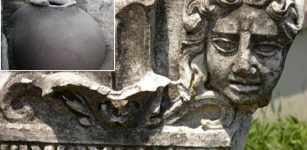 Huge Phitos (Jar) Unearthed In Ancient City Of Prusias ad Hypium, Turkey
Archaeology | Jun 26, 2022
Huge Phitos (Jar) Unearthed In Ancient City Of Prusias ad Hypium, Turkey
Archaeology | Jun 26, 2022 -
 Ancient Greeks Had Knowledge Of Advanced Lifting Technology Long Before Modern Cranes Were Invented
Ancient Technology | Aug 29, 2019
Ancient Greeks Had Knowledge Of Advanced Lifting Technology Long Before Modern Cranes Were Invented
Ancient Technology | Aug 29, 2019 -
 How Pre-Industrial Communities in Northeastern Europe Adapted to Climate Changes Over the Past Two Millennia
Archaeology | Feb 3, 2025
How Pre-Industrial Communities in Northeastern Europe Adapted to Climate Changes Over the Past Two Millennia
Archaeology | Feb 3, 2025 -
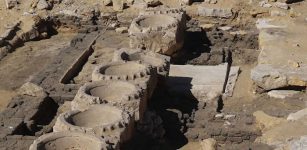 4,500-Year-Old Lost ‘Sun Temple’ Dedicated To God Ra Unearthed In Abu Gorab Necropolis
Archaeology | Aug 4, 2022
4,500-Year-Old Lost ‘Sun Temple’ Dedicated To God Ra Unearthed In Abu Gorab Necropolis
Archaeology | Aug 4, 2022 -
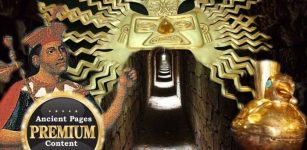 Ancient City Filled With Treasures May Be Hidden Underground In South America
Ancient Mysteries | Jul 20, 2018
Ancient City Filled With Treasures May Be Hidden Underground In South America
Ancient Mysteries | Jul 20, 2018 -
 1,500-Year-Old ‘Magical Mirror’ To Protect Against Evil Eye Discovered By A Teenager In Israel
Archaeology | Aug 9, 2023
1,500-Year-Old ‘Magical Mirror’ To Protect Against Evil Eye Discovered By A Teenager In Israel
Archaeology | Aug 9, 2023 -
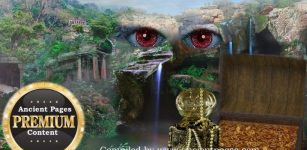 Ancient Mysteries In The Amazon Jungle – Strange White Men With Glowing Eyes – Part 1
Ancient Mysteries | May 28, 2018
Ancient Mysteries In The Amazon Jungle – Strange White Men With Glowing Eyes – Part 1
Ancient Mysteries | May 28, 2018 -
 Piecing Together Scotland’s Religious Past With Shards Of Glass
Archaeology | Feb 28, 2023
Piecing Together Scotland’s Religious Past With Shards Of Glass
Archaeology | Feb 28, 2023 -
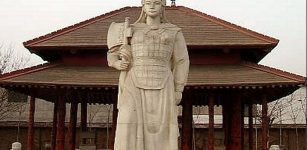 Lady Fu Hao: Brave Warrior Skilled Strategist And China’s First Female General
Featured Stories | Mar 9, 2019
Lady Fu Hao: Brave Warrior Skilled Strategist And China’s First Female General
Featured Stories | Mar 9, 2019 -
 DNA Identifies Historical Remains Of George Washington’s Relatives
DNA | Mar 29, 2024
DNA Identifies Historical Remains Of George Washington’s Relatives
DNA | Mar 29, 2024 -
 Elongated Skulls: Did Intentional And Intriguing Ancient Tradition Originate In China?
Archaeology | Jul 5, 2019
Elongated Skulls: Did Intentional And Intriguing Ancient Tradition Originate In China?
Archaeology | Jul 5, 2019 -
 Amergin: First Druid And ‘Wondrously Born’ Son Of Mil, Founder Of Poetry, Was Judge In Irish Mythology
Celtic Mythology | Mar 3, 2022
Amergin: First Druid And ‘Wondrously Born’ Son Of Mil, Founder Of Poetry, Was Judge In Irish Mythology
Celtic Mythology | Mar 3, 2022
